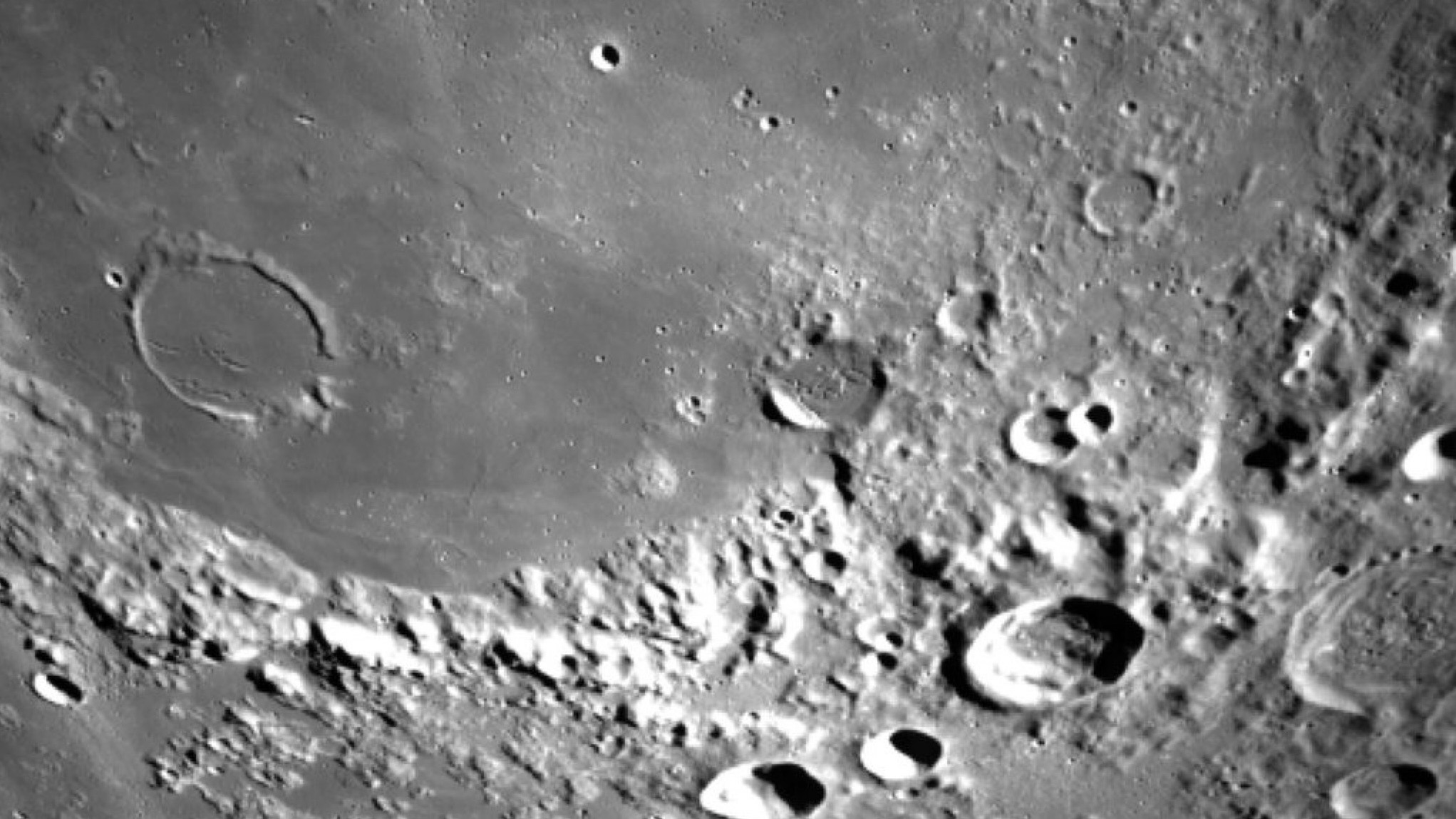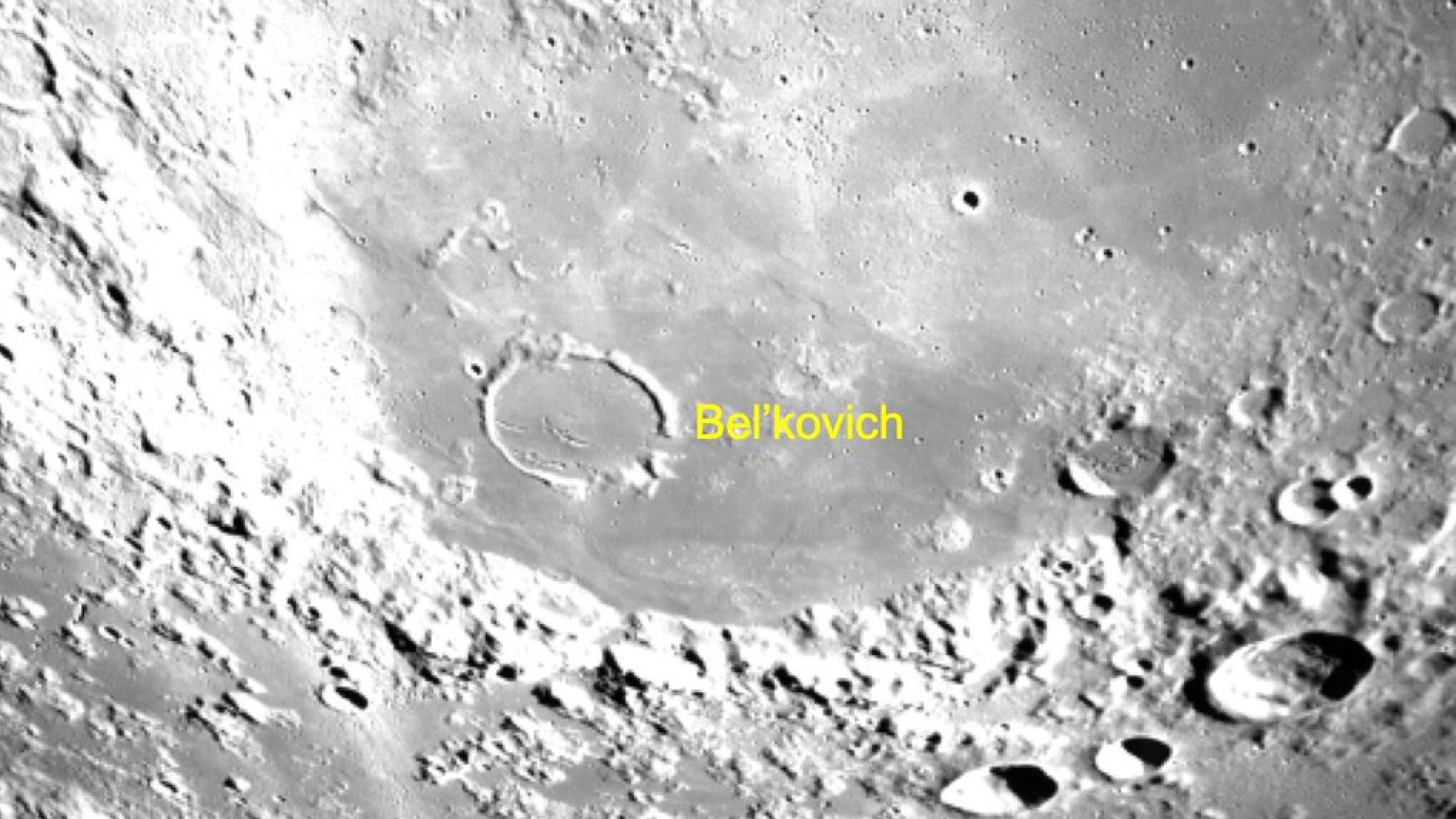India's Chandrayaan-3 images far side of the moon ahead of Aug. 23 landing try (photos)
The spacecraft has tested out its Lander Hazard Detection and Avoidance Camera.

India's Chandrayaan-3 probe has been testing out its landing optics by imaging the far side of the moon.
The Indian Space Research Organisation (ISRO) released the images via X, the social media service formerly named Twitter, on Monday (Aug. 21).
The series of four Chandrayaan-3 images were taken on Saturday (Aug. 19) and show a range of geological features, including vast impact craters that cast varying degrees of shadows and lunar mare, or "seas" of cooled moon lava.
Related: Chandrayaan-3: A guide to India's third mission to the moon

The far side of the moon never faces Earth because of "tidal locking," with our planet's gravity having slowed the rotation of its natural satellite over billions of years. The moon completes one rotation on its axis in the same amount of time it takes to orbit Earth.
The new images were captured by Chandrayaan-3's Lander Hazard Detection and Avoidance Camera (LHDAC). The camera is designed to help guide the mission's Vikram lander to a safe landing site during its descent onto the lunar surface.
"This camera that assists in locating a safe landing area — without boulders or deep trenches — during the descent is developed by ISRO at SAC," ISRO stated.
Get the Space.com Newsletter
Breaking space news, the latest updates on rocket launches, skywatching events and more!
Chandrayaan-3 is scheduled to land around 8:34 a.m. EDT (1234 GMT and 18:04 India time) on Wednesday (Aug. 23). The spacecraft is targeting a landing site at 69.37 degrees south latitude and 32.35 degrees east longitude, near the lunar south pole. A live telecast of the attempt will begin around 45 minutes earlier, according to ISRO. You can watch that webcast here at Space.com.
Chandrayaan-3 is now aiming to be the first probe ever to make a soft landing in the vicinity of the lunar south pole. It was considered by many to be in a race with Russia's Luna-25 lander, but the latter spacecraft crashed into the moon following a failed orbital maneuver on Saturday (Aug. 19).
Chandrayaan-3 Mission:Here are the images of Lunar far side area captured by the Lander Hazard Detection and Avoidance Camera (LHDAC). This camera that assists in locating a safe landing area -- without boulders or deep trenches -- during the descent is developed by ISRO… pic.twitter.com/rwWhrNFhHBAugust 21, 2023
India's first attempt to land on the moon came in 2019. The Chandrayaan-2 lander experienced errors during the latter part of its descent and made a hard impact with the lunar surface. ISRO stated on Monday that the Chandrayaan-3 lander established two-way communications with the orbiter from the Chandrayaan-2 mission.
Chandrayaan-3 launched into a highly elliptical Earth orbit on July 14, before gradually raising its orbit and firing itself into a lunar trajectory. It entered lunar orbit on Aug. 5 before conducting a series of engine burns to circularize its orbit.
The Vikram lander, which also carries a small rover named Pragyan, separated from the mission's propulsion module on Aug. 17. If they land successfully, Vikram and Pragyan will spend almost a full lunar daytime (roughly 14 Earth days) conducting science experiments on the moon.
A soft landing would make India only the fourth country, after the United States, the former Soviet Union and China, to achieve such a feat. But that list could soon get bigger. Japan's Smart Lander for Investigating Moon (SLIM) is scheduled to lift off on a H-2A rocket on Aug. 26 from Tanegashima Space Center.
Join our Space Forums to keep talking space on the latest missions, night sky and more! And if you have a news tip, correction or comment, let us know at: community@space.com.

Andrew is a freelance space journalist with a focus on reporting on China's rapidly growing space sector. He began writing for Space.com in 2019 and writes for SpaceNews, IEEE Spectrum, National Geographic, Sky & Telescope, New Scientist and others. Andrew first caught the space bug when, as a youngster, he saw Voyager images of other worlds in our solar system for the first time. Away from space, Andrew enjoys trail running in the forests of Finland. You can follow him on Twitter @AJ_FI.









